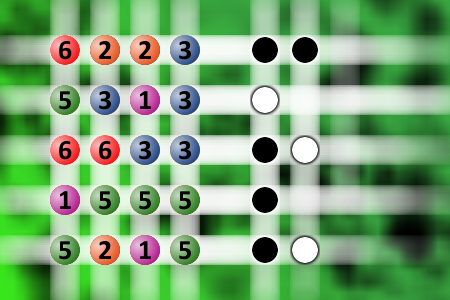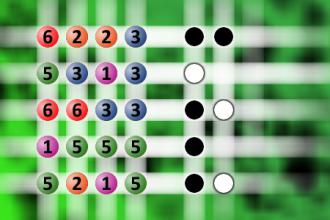What a winning combination?
The computer chose a secret code (sequence of 4 digits from 1 to 6). Your goal is to find that code. Black circles indicate the number of hits on the right spot. White circles indicate the number of hits on the wrong spot.
Church Bulletin Bloopers: Peace and Pancakes
Our youth basketball team is back in action Wednesday at 8 PM in the recreation hall
Come out and watch us kill Christ the King
Ladies, don't forget the rummage sale
It's a chance to get rid of those things not worth keeping around the house
Don't forget your husbands
The peacemaking meeting scheduled for today has been cancelled due to a conflict
The Lutheran men's group will meet at 6 pm
Steak, mashed potatoes, green beans, bread, and dessert will be served for a nominal feel.Ladies Bible Study will be held Thursday morning at 10
All ladies are invited to lunch in the Fellowship Hall after the B.S. is done.
This afternoon, there will be a meeting in the south and north ends of the church
Children will be baptized at both ends
Tuesday at 4:00 pm there will be an ice cream social
All ladies giving milk will please come early
Bertha Belch, a missionary from Africa, will be speaking tonight at Calvary Methodist
Come hear Bertha Belch all the way from Africa.
The pastor would appreciate it if the ladies of the congregation would lend him their electric girdles for the pancake breakfast next Sunday
Due to weather conditions, there will not be any “Women Worth Watching” this week
The church is glad to have with us today as our guest minister the Rev. Shirley Green, who has Mrs. Green with him
After the service, we request that all remain in the sanctuary for the Hanging of the Greens.Don't miss this Saturday's exhibit by Christian Martian Arts.

